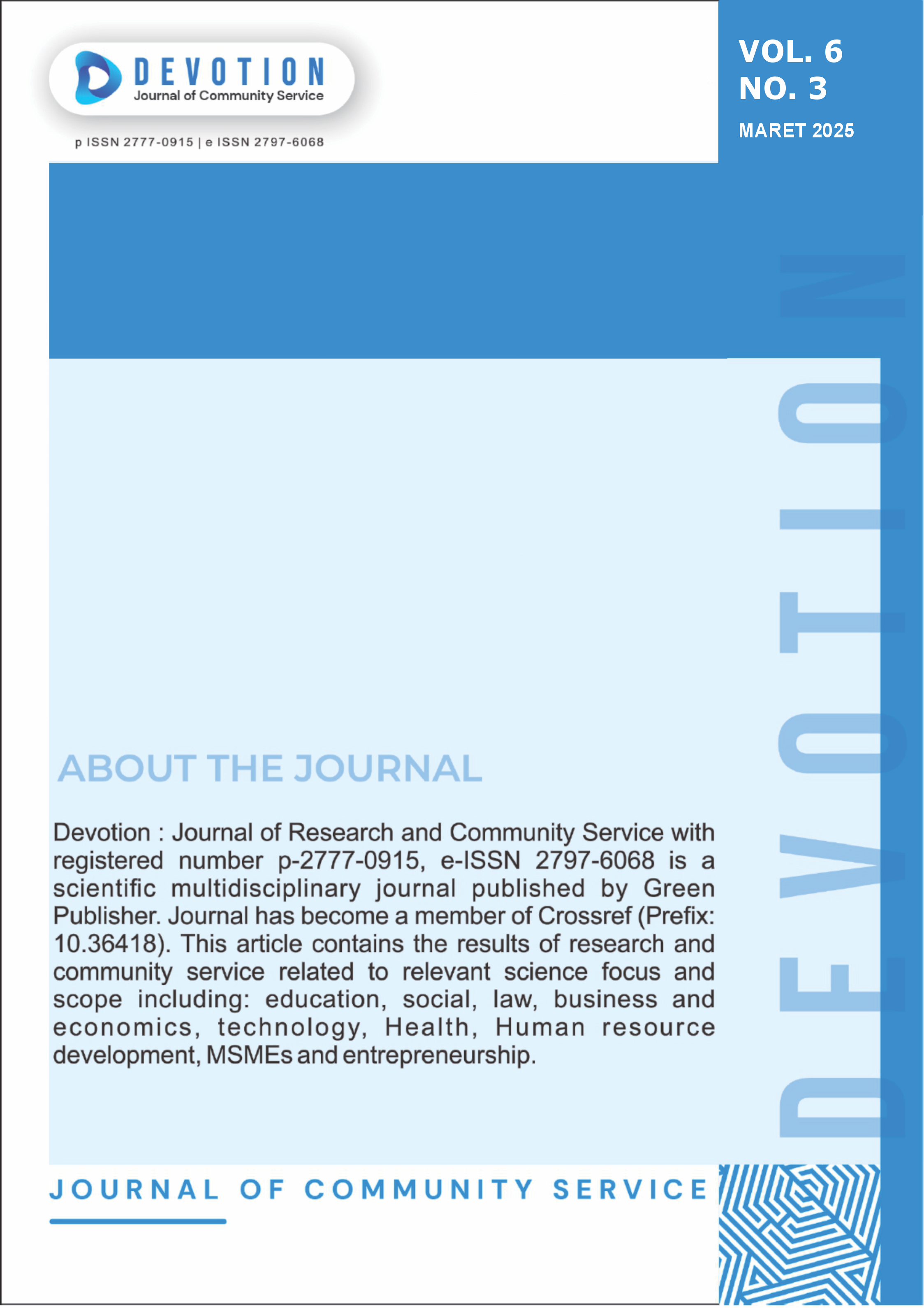Cost and Time Efficiency Through The Application of Value Engineering In The Construction of an ASN Flat Building In Seram Bagian Barat Regency
DOI:
https://doi.org/10.59188/devotion.v6i3.25434Abstract
This research employs the Value Engineering (VE) method to address these challenges, focusing on high-impact work items such as formwork, floor slabs, walls, and structural elements. Utilizing techniques like Work Breakdown Structure (WBS) and Function Analysis System Technique (FAST), the study systematically evaluates opportunities for cost and time savings while maintaining the project’s functional and quality standards. The results demonstrate that the application of knock-down formwork systems significantly reduces material costs and accelerates construction schedules, achieving up to 20% cost savings in specific work items. The use of local materials further contributes to the optimization process, reducing procurement costs and supporting sustainable practices by minimizing environmental impact. Additionally, the redesign of structural components, such as optimized column dimensions, enhances efficiency without compromising safety or functionality. This study underscores the importance of VE as a collaborative and multidisciplinary tool that integrates technical, social, and cultural considerations. It highlights the critical role of stakeholder involvement, particularly in projects with complex socio-cultural dynamics, ensuring practical and acceptable solutions. By illustrating the effectiveness of VE in overcoming constraints, this research provides a valuable framework for applying VE in future infrastructure projects, especially in areas with similar challenges.
Downloads
Published
Issue
Section
License
Copyright (c) 2025 Eko Pramono, Budi Witjaksana, Jaka Purnama

This work is licensed under a Creative Commons Attribution-ShareAlike 4.0 International License.
Authors who publish with this journal agree to the following terms:
- Authors retain copyright and grant the journal right of first publication with the work simultaneously licensed under a Creative Commons Attribution-ShareAlike 4.0 International. that allows others to share the work with an acknowledgement of the work's authorship and initial publication in this journal.
- Authors are able to enter into separate, additional contractual arrangements for the non-exclusive distribution of the journal's published version of the work (e.g., post it to an institutional repository or publish it in a book), with an acknowledgement of its initial publication in this journal.
- Authors are permitted and encouraged to post their work online (e.g., in institutional repositories or on their website) prior to and during the submission process, as it can lead to productive exchanges, as well as earlier and greater citation of published work.













